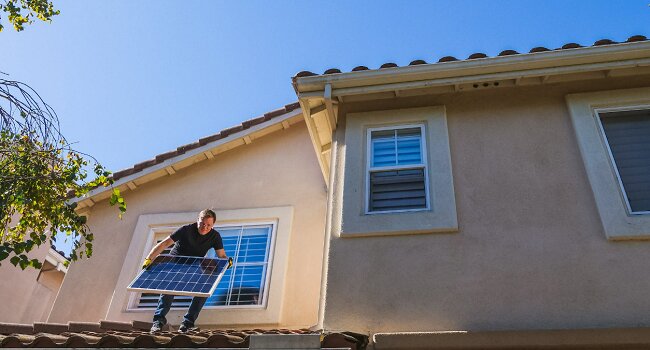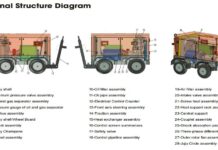A solar generator is a great way to have a reliable source of electricity when the power goes out or when you’re off the grid. But, before you buy one, it’s important to know how much power you need. This is where the concept of watts comes in.
In this blog post, we’ll explain what watts are and how they relate to electricity, help you determine your power needs, and then show you how to calculate how many watts you need for your solar generator. By the end of this post, you’ll have a good understanding of how to choose the right solar generator for your needs.
So, whether you’re planning on using your generator for camping, tailgating, or as an emergency power source, this guide will help you make an informed decision and get the most out of your investment.
Understanding Watts and Power Needs
The power usage of an electrical device is measured in watts. A watt is a unit of power which is equal to one ampere of current flowing at a potential difference of one volt. It is a way to measure the rate per hour at which energy is being used. For example, a 100-watt light bulb uses 100 watts of power per hour when it’s turned on. So when calculating your power needs, you need to think about how many watts your devices consume.
Common Household Appliances and Their Wattage Needs
There are many household appliances that you might use regularly, such as a refrigerator, a washing machine, a television, and so on. It’s important to know how many watts each of these appliances uses so you can calculate your total power needs. For example, a standard refrigerator uses between 150 and 250 watts per hour, a washing machine uses between 500 and 1500 watts per hour, and a television can use between 50 and 200 watts per hour, depending on the size and features.
Here’s an expanded list of common household appliances and their approximate wattage usage:
- Refrigerator: 150-250 watts per hour
- Washing machine: 500-1500 watts per hour
- Television: 50-200 watts per hour
- Dishwasher: 1200-2400 watts per hour
- Air conditioner: 1000-1500 watts per hour
- Microwave: 750-1000 watts per hour
- Computer: 50-150 watts per hour
- Vacuum cleaner: 700-1000 watts per hour
- Toaster: 600-800 watts per hour
- Electric stove: 1200-2400 watts per hour
- Coffee maker: 500-800 watts per hour
- Hair dryer: 1000-1800 watts per hour
- Water heater: 3000-5500 watts per hour
Keep in mind that the wattage usage can vary depending on the make and model of the appliance, and usage. It’s important to check the specifications of your specific appliances to get an accurate idea of their power needs. Additionally, you should also consider things like lights, charging devices, and other miscellaneous items when determining your total power needs.
It’s important to note that these wattage usage are approximate and are based on average usage, so actual usage and wattage will vary depending on the specific model and how you use it, you should always check the specifications or consult with manufacturer or seller of the device.
Tips for Determining Your Own Power Needs
To determine your own power needs, you should start by listing all of the appliances and devices you plan to use with your solar generator. Then, use the information from the section above as a reference to determine how many watts each device uses.
For example, you may not need an air conditioner running all the time, but only when you are at home, or when the temperature inside gets too hot. Additionally, you should also consider things like lights, charging devices, and other miscellaneous items. Once you have a list of all your devices and their power usage, you can add them up to get your total power needs. It’s also important to consider any potential power needs in the future and plan for scalability.
Determining Your Solar Generator Needs
The Relationship Between Solar Panels, Batteries, and Inverters
A solar generator is essentially made up of three main components: solar panels, batteries, and an inverter. Solar panels convert the energy from the sun into electricity which is then stored in the batteries. The inverter is responsible for converting the stored DC electricity from the batteries into the AC electricity that is needed to power your appliances and devices. It’s important to understand the relationship between these three components when determining your power needs for a solar generator.
Determining the Size of the Solar Panel Array Needed
The size of the solar panel array needed to power your appliances depends on a number of factors, including the total power needs of your devices and the amount of sun exposure your location receives. A rough rule of thumb is to aim for around 100 watts of solar panels for every 100 watts of power you need. However, this is a general guideline and you should consult with a professional or use online tools and calculators to get a more accurate idea of the size of the solar panel array you need.
When calculating the size of the solar panel array, it’s important to consider the total power needs of your devices and the amount of sun exposure your location receives. As a general guideline, you can aim for around 100 watts of solar panels for every 100 watts of power you need. However, this is a general guideline and you should consult with a professional or use online tools and calculators to get a more accurate idea of the size of the solar panel array you need.

300-watt solar panels are one option available in the market, they are a bit more powerful than the standard panels, which typically range between 250-280 watts, and are often used by residential and commercial properties that have higher energy consumption or large rooftop areas. They can be a good option to consider if you have a high power consumption or if you have limited space for solar panels. They are also ideal for off-grid applications such as RVs, boats and cabins.
It’s important to note that the choice of solar panels is not only based on the wattage but also on the efficiency, durability, and design of the panel. You should always consult with a professional to determine the best option for your specific needs and location.
Information on Different Types of Batteries and How to Choose the Right One
There are several different types of batteries that can be used in a solar generator, including lead-acid, lithium-ion, and nickel-cadmium. Each type has its own advantages and disadvantages, and the right choice for you will depend on your specific needs. Generally, lead-acid batteries are the most economical, but also the heaviest, whereas lithium-ion batteries are the most expensive but also the lightest and most efficient. You should research the different types of batteries and consult with a professional to choose the right one for your needs.
The Importance of a High-Quality Inverter
A high-quality inverter is an essential component of a solar generator, as it ensures that the electricity stored in the batteries is converted into the AC power needed to run your appliances and devices. When choosing an inverter, it’s important to consider factors such as the inverter’s efficiency, power handling capability, and compatibility with your battery system.
Additionally, you may want to look into the warranty, lifespan and quality of the inverter too. It’s also a good idea to consult with a professional and research different solar panel companies before making a final decision.
Putting It All Together
Sample Calculation
To give an idea of the process of determining your solar generator needs, let’s take a look at a sample calculation. Let’s say that you have a refrigerator that uses 200 watts per hour, a washing machine that uses 1000 watts per hour, and a television that uses 100 watts per hour.
To find the total watt-hours per day, you would multiply the wattage of each device by the number of hours you plan on using it per day:
- Refrigerator: 200 watts x 24 hours = 4800 watt-hours
- Washing machine: 1000 watts x 2 hours = 2000 watt-hours
- Television: 100 watts x 4 hours = 400 watt-hours
- Adding these three numbers together, the total watt-hours per day for this sample household is 7200 watt-hours (4800 + 2000 + 400)
How to Use the Calculation to Choose the Right Solar Generator
With this total watt-hours per day, you can use it as a guide when choosing the size of your solar panel array and battery system. Once you have this information, you can use online tools and calculators or consult with a professional to determine the size of the solar panel array, the type and size of battery and the type of inverter you need to meet your power needs. Additionally, you should also consider factors such as the cost, warranty, and scalability to make a final decision.
Additional Resources and Tools
There are many resources and tools available to help you with your calculations, including online calculators, apps, and tutorials. Some good options include the National Renewable Energy Laboratory’s PV Watts Calculator and Google’s Project Sunroof.
You can also find information and assistance from solar installation companies, solar panel manufacturers, and renewable energy organizations. Remember to also consult with a professional who could provide a more accurate and specific calculation based on your location and device usage.
Conclusion
In this blog post, we’ve discussed the importance of calculating your power needs when choosing a solar generator, explained the concept of watts and how they relate to electricity, provided examples of common household appliances and their power needs, and explained how to determine the size of your solar panel array, choose the right battery, and inverter. We’ve also provided a sample calculation of total power needs, and tips on how to use that information to choose the right solar generator.
The best way to ensure that you have the right solar generator for your needs is to do your own research and calculations. Use the information provided in this post as a starting point and be sure to consult with professionals and use additional resources and tools to get a more accurate idea of your power needs.
When choosing a solar generator, it’s important to consider not just your current energy needs but also your future energy needs. It’s always better to plan for scalability and have more capacity than you initially need rather than to end up having to purchase another generator soon. Solar generators are a long-term investment and should be chosen with care.






























